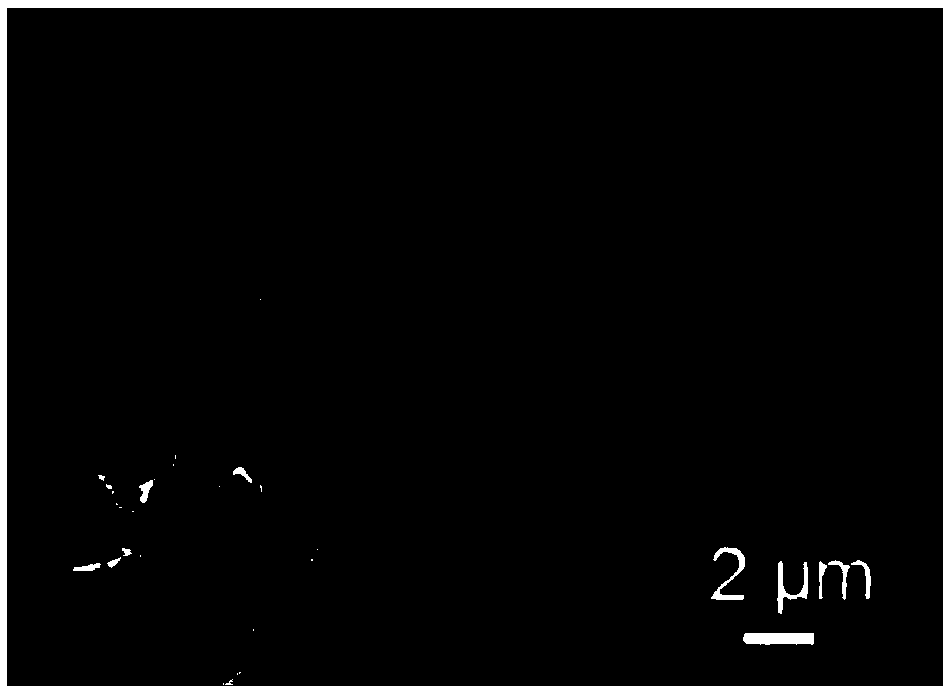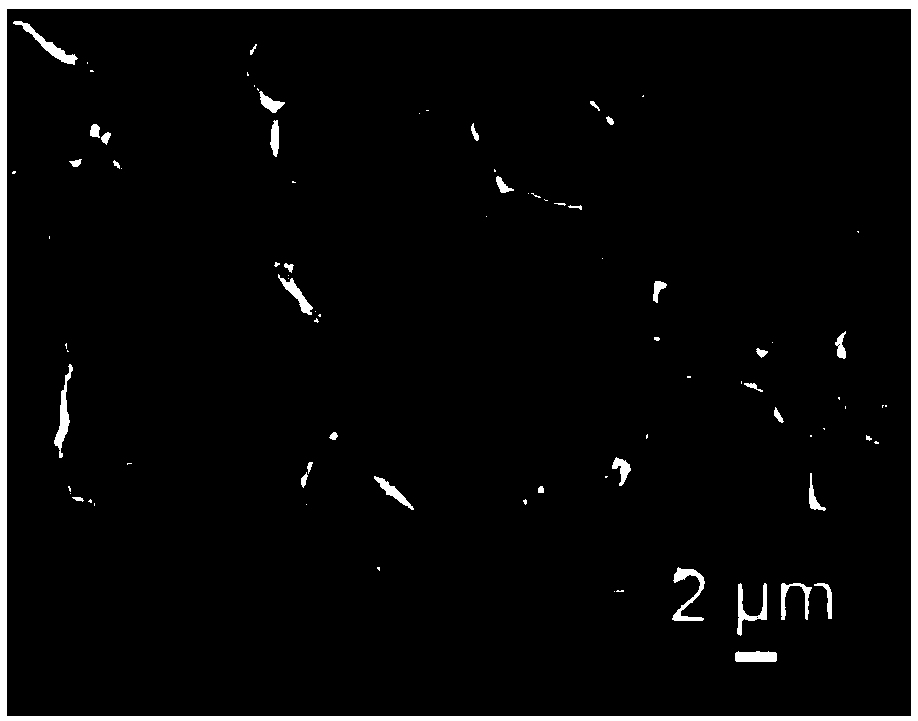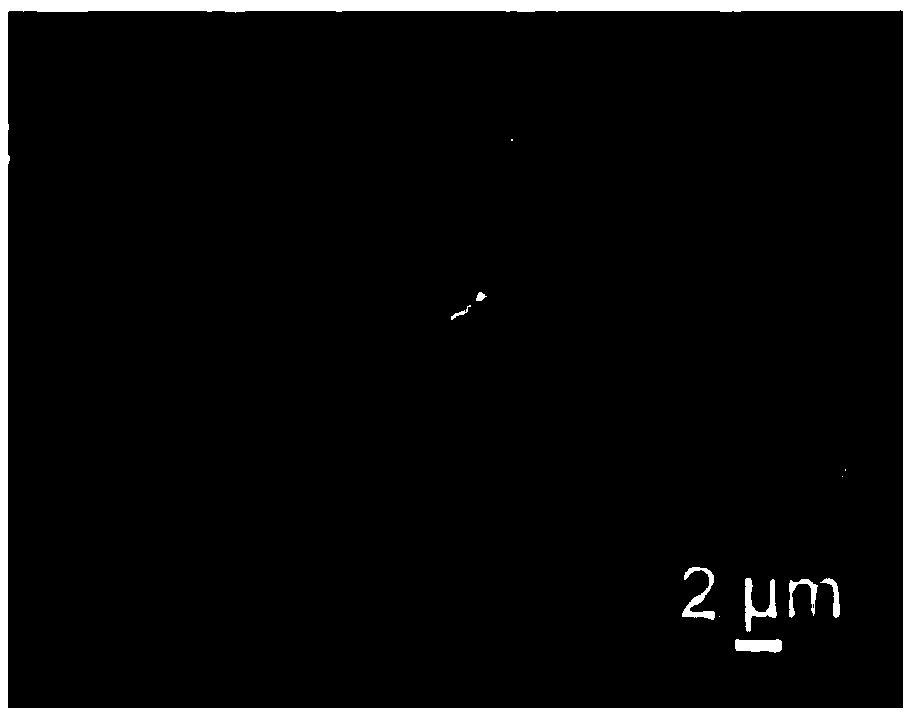Preparation method of cobalt nitrogen co-doped biomass carbon oxidation reduction catalyst
A biomass carbon, co-doping technology, applied in catalyst activation/preparation, physical/chemical process catalysts, chemical instruments and methods, etc., can solve problems that hinder the commercial application of large-scale equipment, poor stability and methanol resistance, and easy fuel. Penetration and other problems, to achieve the effect of low price, good methanol resistance and stability, and ORR performance improvement
- Summary
- Abstract
- Description
- Claims
- Application Information
AI Technical Summary
Problems solved by technology
Method used
Image
Examples
Embodiment 1
[0026] A method for co-doping biomass carbon with cobalt and nitrogen to improve the performance of redox catalysts. The preparation of biomass porous carbon materials: using fresh kelp as raw material, freezing with liquid nitrogen, putting it into a vacuum dryer for drying, and crushing through 20 meshes after drying Sieve for use; take the pulverized kelp and add a certain amount of potassium hydroxide to grind and mix thoroughly, put it in a porcelain boat and place it in a high-temperature furnace with a nitrogen flow rate of 1L / min and a heating rate of 5°C / min, and set a certain activation temperature and activation time; after activation The sample was first washed with 10% hydrochloric acid, then washed with deionized water until neutral, and dried by suction to obtain the final sample. Preparation of cobalt nitrogen co-doped biomass porous carbon material: First, take 20 mg of optimized biomass activated carbon, add 6 mL of deionized water to stir and disperse, after ...
Embodiment 2
[0028] A method for co-doping biomass carbon with cobalt and nitrogen to improve the performance of redox catalysts. The preparation of biomass porous carbon materials: using fresh kelp as raw material, freezing with liquid nitrogen, putting it into a vacuum dryer for drying, and crushing through 20 meshes after drying Sieve for use; take the pulverized kelp and add a certain amount of potassium hydroxide to grind and mix thoroughly, put it in a porcelain boat and place it in a high-temperature furnace with a nitrogen flow rate of 1L / min and a heating rate of 5°C / min, and set a certain activation temperature and activation time; after activation The sample was first washed with 10% hydrochloric acid, then washed with deionized water until neutral, and dried by suction to obtain the final sample. Preparation of cobalt nitrogen co-doped biomass porous carbon material: First, take 20 mg of optimized biomass activated carbon, add 6 mL of deionized water to stir and disperse, after ...
Embodiment 3
[0030]A method for co-doping biomass carbon with cobalt and nitrogen to improve the performance of redox catalysts. The preparation of biomass porous carbon materials: using fresh kelp as raw material, freezing with liquid nitrogen, putting it into a vacuum dryer for drying, and crushing through 20 meshes after drying Sieve for use; take the pulverized kelp and add a certain amount of potassium hydroxide to grind and mix thoroughly, put it in a porcelain boat and place it in a high-temperature furnace with a nitrogen flow rate of 1L / min and a heating rate of 5°C / min, and set a certain activation temperature and activation time; after activation The sample was first washed with 10% hydrochloric acid, then washed with deionized water until neutral, and dried by suction to obtain the final sample. Preparation of cobalt nitrogen co-doped biomass porous carbon material: First, take 20 mg of optimized biomass activated carbon, add 6 mL of deionized water to stir and disperse, after 1...
PUM
 Login to View More
Login to View More Abstract
Description
Claims
Application Information
 Login to View More
Login to View More - R&D
- Intellectual Property
- Life Sciences
- Materials
- Tech Scout
- Unparalleled Data Quality
- Higher Quality Content
- 60% Fewer Hallucinations
Browse by: Latest US Patents, China's latest patents, Technical Efficacy Thesaurus, Application Domain, Technology Topic, Popular Technical Reports.
© 2025 PatSnap. All rights reserved.Legal|Privacy policy|Modern Slavery Act Transparency Statement|Sitemap|About US| Contact US: help@patsnap.com



